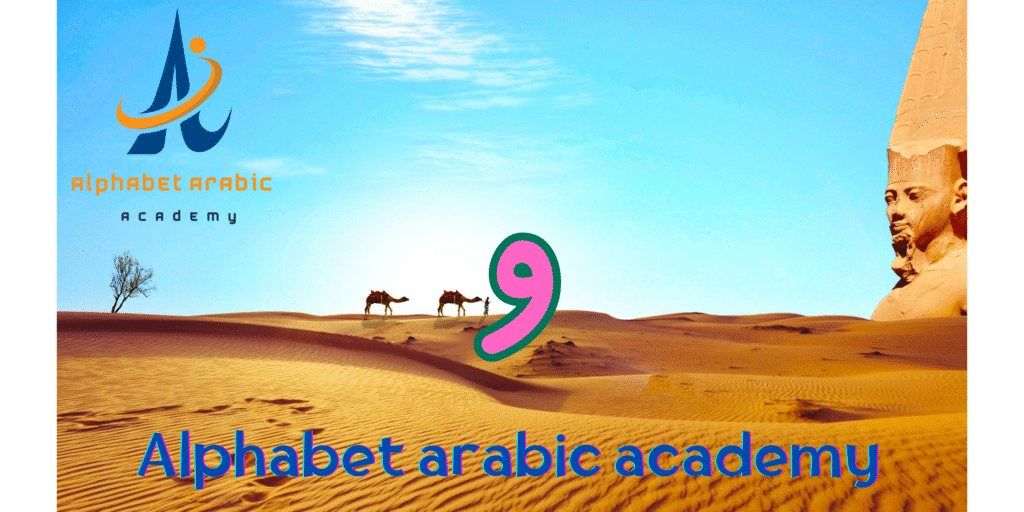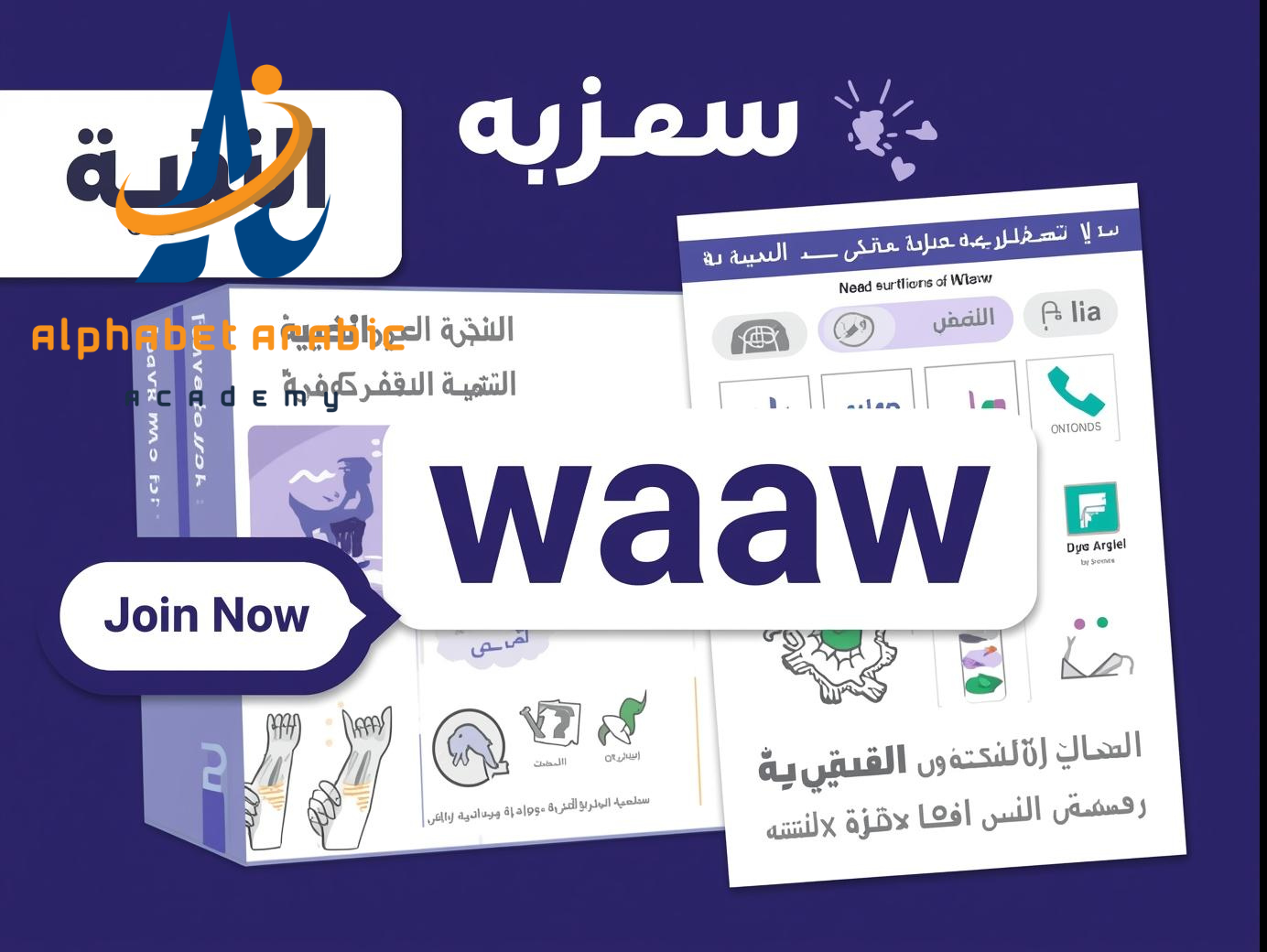Introduction to the waaw arabic letter
waaw arabic The Arabic alphabet, consisting of 28 letters, is foundational to the Arabic language, which is spoken by millions of people worldwide. Each letter carries unique characteristics and functions that contribute to the richness and versatility of the language. Among these letters, the letter Waaw (و) holds a special position as the 27th letter of the Arabic alphabet. Waaw is not only significant due to its placement but also because of its dual functionality; it can serve both as a consonant and a vowel.
When functioning as a consonant, Waaw is pronounced as the English “w” sound, as in the word “water.” This phonetic feature is essential for forming numerous Arabic words, making Waaw a frequently encountered letter in everyday language. As a vowel, Waaw can represent the long vowel sound “oo,” similar to the English “moon.” This versatility allows Waaw to seamlessly integrate into a variety of linguistic contexts, enhancing the expressiveness and fluidity of Arabic speech and writing.

The importance of understanding Waaw in its different roles cannot be overstated, particularly for learners of Arabic. Mastery of this letter aids in the accurate pronunciation and comprehension of words, contributing to more effective communication. Additionally, recognizing Waaw’s dual nature helps learners appreciate the intricate structure of the Arabic language, where letters can dynamically shift roles depending on their placement within words.
As we explore the letter Waaw in greater depth, we will examine its usage through word samples and practical examples. This approach not only reinforces theoretical knowledge but also provides tangible insights into how Waaw operates within the broader framework of Arabic. Through this examination, learners can gain a more comprehensive understanding of Waaw’s significance and application in the Arabic language.
Pronunciation of Waaw
The Arabic letter Waaw (و) presents itself uniquely within the Arabic script, as it can function both as a consonant and a long vowel. Understanding these dual roles is crucial for mastering its pronunciation and application in various words.
When Waaw is used as a consonant, it is pronounced similarly to the English “w” sound, as heard in words like “water” or “window.” This consonantal sound can be found in Arabic words such as “وَلَد” (walad), which means “boy.” The pronunciation here is quite straightforward for English speakers, as it does not significantly differ from the “w” sound in English.
In contrast, when Waaw serves as a long vowel, it takes on a different phonetic character. In this capacity, Waaw is pronounced like the English long “oo” sound, as in “moon” or “food.” This vowel sound is represented in Arabic words like “طُول” (ṭūl), meaning “length.” The key to differentiating the long vowel pronunciation from the consonant pronunciation lies in the context of the word and the surrounding letters.
Phonetically, Waaw as a long vowel can be compared to the “u” sound in French words like “loup” (wolf) or “fou” (crazy), which can aid learners familiar with multiple languages. The smooth, elongated “oo” sound maintains the same quality regardless of its position within the word, providing a consistent auditory cue for learners.
To master the pronunciation of Waaw in both its consonant and vowel forms, it is beneficial to practice with a variety of word samples. Repetition and listening to native speakers can significantly enhance one’s ability to distinguish and accurately pronounce Waaw in its different contexts. By systematically approaching the pronunciation of Waaw, learners can effectively integrate this versatile letter into their Arabic vocabulary.
When learning the Arabic letter Waaw, it is essential to understand its various forms based on its position within a word. The letter Waaw, represented by the character “و,” exhibits different shapes depending on whether it appears at the beginning, middle, or end of a word, or in its isolated form. Each form maintains the core structure of the Waaw, yet adapts to maintain the fluidity of Arabic script.
The letter Waaw و with the Harakat حركات:
The letter Waaw و with fat.ha فتحة:
| ARABIC | ENGLISH | PRONUNCIATION |
|---|---|---|
| وَحش | Monster | Wahsh |
| ألوَان | Colors | Alwan |
| وَاحد | One | Wahed |
The letter Waaw و with the Damma ضمة:
| ARABIC | ENGLISH | PRONUNCIATION |
|---|---|---|
| وُجوه | Faces | Wujuh |
| وُحوش | Monsters | Wuhush |
| وُقود | Fuel | Wuqud |
The letter Waaw و with Kasra كسرة:
| ARABIC | ENGLISH | PRONUNCIATION |
|---|---|---|
| طاوِلة | Table | Tawila |
| وِسادة | Pillow | Wisada |
| أدوِية | Drugs | Adwya |
The letter Waaw و with Sukuun سكون:
| ARABIC | ENGLISH | PRONUNCIATION |
|---|---|---|
| هدوْء | Calm | Huduu‘ |
| زوْرق | Boat | Zawraq |
| حوْض | Tank | Hawd |
The letter Waaw و with Hamza ء
Improved sentence:
“In certain Arabic words, the Hamza ء is placed above the letter Waaw و. When this occurs, the Hamza is pronounced separately from the Waaw, creating a distinct sound.”
| ARABIC | ENGLISH | PRONUNCIATION |
|---|---|---|
| سؤال | Question | Su’aal |
| تفاؤل | Optimism | Tafa’awul |
| تنبؤ | Prediction | Tanabbo’ |
Isolated Form
When standing alone, the Waaw is written as “و”. This form is straightforward and is often the first version learners encounter. Its distinct, loop-like shape is easily recognizable and serves as the foundation for its other forms.
Initial Form
In the initial position, the Waaw connects to the following letter, altering its appearance slightly. The initial form is “و”. Unlike some other Arabic letters, the Waaw does not connect to the letter preceding it, making it unique. For example, in the word “وادي” (wadi – valley), the Waaw retains its individual form at the beginning of the word.
Medial Form
When appearing in the middle of a word, Waaw maintains its characteristic shape. It does not connect to the preceding letter, but it does connect to the following one. The medial form is also “و”. An example can be seen in the word “حوالي” (hawali – approximately), where the Waaw is positioned between two letters yet stands out clearly.
Final Form
At the end of a word, the Waaw appears as “و”. This form is identical to the isolated form, emphasizing the letter’s consistency. An example is the word “جرو” (Puppy), where the Waaw concludes the word without altering its appearance.
Understanding these forms is crucial for mastering Arabic script and ensuring accurate writing and comprehension. The Waaw’s unique ability to maintain its form across different positions simplifies its usage, making it a manageable letter for learners to grasp.
Waaw in Common Arabic Words
The Arabic letter Waaw (و) is a versatile character that appears in various common words across the Arabic language. Below, we explore a selection of these words, providing their Arabic script, transliteration, pronunciation guide, and English translation, along with contextual explanations of their meanings and usage.
1. وردة (warda) – Pronounced as “wa-rda,” this word translates to “rose” in English. “Warda” is commonly used in everyday conversation and literature to signify beauty and affection. For example, one might say, “أهديتك وردة” (ahdaytuka warda), meaning “I gave you a rose.”
2. وقت (waqt) – Pronounced as “wa-qt,” this word means “time.” Time management and scheduling are integral aspects of daily life, making “waqt” a frequently used term. An example sentence is, “الوقت من ذهب” (al-waqt min dhahab), meaning “Time is gold.”
3. ولد (walad) – Pronounced as “wa-lad,” this term translates to “boy” or “son.” It is often used in family contexts or when referring to male children. For instance, “هذا ولدي” (hatha waladi) means “This is my son.”
4. واجب (wajib) – Pronounced as “wa-jib,” this word means “duty” or “homework.” It is commonly used in educational settings and in discussions about responsibilities. For example, “يجب عليك القيام بواجبك” (yajibu ‘alayka al-qiyam bi-wajibik) translates to “You must do your duty.”
5. وسط (wasat) – Pronounced as “wa-sat,” this word means “middle” or “center.” It is often used to describe locations or positions. For instance, “المدينة في وسط البلاد” (al-madina fi wasat al-bilad) means “The city is in the middle of the country.”
These examples highlight the significance of the letter Waaw in Arabic vocabulary, showcasing its role in essential and frequently used words. Understanding these common usages can enhance one’s grasp of the language and improve communication skills in various contexts.
Waaw as a Conjunction
The Arabic letter Waaw (و) serves a crucial role as a conjunction, equivalent to the English word ‘and’. This usage is fundamental in Arabic grammar, seamlessly linking words, phrases, and even sentences to enhance clarity and coherence. The simplicity and versatility of Waaw make it indispensable for constructing compound and complex sentences in Arabic.
For instance, consider the sentence: “أنا أحب التفاح والموز” (Ana uḥibbu attufaḥ wa al-mawz), which translates to “I like apples and bananas.” Here, Waaw efficiently connects “التفاح” (apples) and “الموز” (bananas), reflecting its connective function. Similarly, in the sentence “ذهب محمد إلى المدرسة وعاد إلى البيت” (Dhahaba Muḥammad ila al-madrasah wa ‘āda ila al-bayt), meaning “Muhammad went to school and returned home,” Waaw links two separate actions, providing a coherent flow of events.
Waaw also plays a pivotal role in forming compound subjects and predicates. For example, “الطلاب والمعلمون في الفصل” (Al-ṭullāb wa al-muʿallimūn fi al-faṣl) translates to “The students and the teachers are in the classroom,” where Waaw connects the subjects “الطلاب” (students) and “المعلمون” (teachers). This highlights how Waaw not only joins nouns but also ensures grammatical consistency within the sentence structure.
Moreover, Waaw can link more complex phrases and clauses, as seen in “قرأت الكتاب وفهمت الدرس” (Qara’tu al-kitāb wa fahimtu al-dars), meaning “I read the book and understood the lesson.” Here, Waaw connects two independent clauses, demonstrating its capacity to integrate ideas and actions comprehensively.
Understanding the application of Waaw as a conjunction is essential for mastering Arabic language construction. Its functional versatility aids in creating fluid, well-structured sentences, making it a cornerstone in Arabic syntax. By recognizing and practicing its usage, learners can significantly improve their fluency and comprehension in Arabic.
The Role of Waaw in Arabic Grammar
The Arabic letter Waaw (و) plays a pivotal role in the structure and syntax of the Arabic language. One of its primary functions is in the formation of plural nouns. In Arabic, Waaw is often used as a suffix to indicate the masculine sound plural, which is a common way to pluralize nouns that refer to men or mixed-gender groups. For instance, the word “مُدَرِّس” (teacher) becomes “مُدَرِّسون” when pluralized. This transformation demonstrates how Waaw integrates into the noun to signify plurality..
Additionally, Waaw serves as a conjunction in Arabic, similar to the English word “and.” It connects words, phrases, and sentences to create compound structures and maintain the flow of discourse. For example, in the sentence “ذهبت إلى السوق واشتريت الفاكهة” (I went to the market and bought fruit), Waaw seamlessly links the two actions, illustrating its connective function.
Understanding the grammatical roles of Waaw is essential for mastering Arabic. Its use in pluralization, possession, and conjunctions exemplifies how integral this letter is to constructing meaningful and grammatically correct sentences. Through these various applications, Waaw contributes significantly to the richness and complexity of the Arabic language.
Arabic calligraphy is an esteemed art form that melds linguistic precision with aesthetic beauty, and the Arabic letter Waaw (و) holds a distinctive place within it. The letter Waaw is not only integral to the Arabic script but also serves as a versatile element in the tapestry of calligraphic design. Its elegant, round shape lends itself to various stylizations, making it a favored choice for calligraphers aiming to infuse their works with fluidity and grace.
In traditional Naskh script, Waaw is typically rendered with a smooth, circular curve, providing a harmonious balance that complements other letters. This script is often employed in religious texts, where legibility and uniformity are paramount. Conversely, in the more ornamental Diwani script, Waaw can take on an exaggerated, almost whimsical form, with extended loops and flourishes that amplify the visual appeal of the text. This style is commonly found in royal decrees and formal documents, where the artistry of the script is as significant as the message conveyed.
Thuluth script, known for its intricate and elongated characters, offers another dimension to Waaw’s aesthetic potential. Here, the letter is often elongated and embellished with additional strokes, creating a dramatic and imposing visual effect. This script is frequently used in architectural inscriptions and large-scale wall hangings, showcasing the grandeur of Arabic calligraphy.
Examples of calligraphic works featuring the letter Waaw can be found in various historical and contemporary pieces. For instance, the 16th-century Ottoman calligrapher Sheikh Hamdullah is renowned for his masterful use of Waaw in his Quranic manuscripts. In modern times, artists like Hassan Massoudy continue to explore the artistic possibilities of Waaw, blending traditional techniques with contemporary styles to create visually stunning pieces that resonate with both cultural heritage and modern aesthetics.
In essence, the letter Waaw serves as a versatile element in Arabic calligraphy, its form adaptable to a myriad of styles and artistic expressions. Its presence in calligraphic works not only enhances the visual appeal but also underscores the rich cultural and historical significance of the Arabic script.
Practice Exercises and Resources
To master the Arabic letter Waaw, consistent practice is essential. Here are some practical exercises designed to reinforce your writing and recognition skills:
Writing Exercises:
Begin with tracing the letter Waaw using worksheets designed for beginners. These worksheets typically provide dotted outlines to help you get accustomed to the letter’s shape. Progress to writing the letter freehand, both in isolation and within words. Focus on maintaining the correct proportions and fluidity of the strokes.
Recognition Exercises:
Engage in activities that require you to identify the letter Waaw in various texts. Practice reading simple sentences or paragraphs and highlight all occurrences of the letter. This will enhance your ability to recognize Waaw quickly in different contexts.
Additional Resources:
To supplement your practice, consider using the following resources:
- Workbooks: Several workbooks are available that focus on the Arabic alphabet, including the letter Waaw. These workbooks often provide a structured approach to learning, with exercises that gradually increase in complexity.
- Online Tools: Numerous websites offer interactive exercises and games that make learning the Arabic alphabet engaging and fun. Websites such as Quranic, Madinah Arabic, and ArabicPod101 offer valuable resources specifically tailored to learning Arabic letters.
- Apps: Mobile applications such as “Learn Arabic Alphabet,” “Alif Baa Taa,” and “Duolingo” can be incredibly useful. These apps often include features like tracing exercises, pronunciation guides, and quizzes to test your knowledge.
By integrating these exercises and resources into your study routine, you will find that your proficiency with the letter Waaw will significantly improve. Consistent practice and the right tools are key to mastering any new language skill.
Are you ready to increase your Arabic skills? Explore our engaging Arabic Lessons for Beginners starting at just $40. Visit our website at Alphabet Arabic Academy for more comprehensive resources. For personalized guidance, please fill our booking form on the Contact Us form.
For detailed pricing options, check out:
Stay connected with us on social media for the latest updates, tips, and interactive content. Embrace the beauty of every letter, discover the سر hidden in every stroke, and let your journey in Arabic begin today!
Happy learning!






